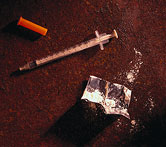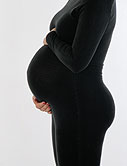Home > Weekly Newsletters > Family Health & Relationships
September 15, 2008
Job Loss Has Long-Term Impact on Social Lives
TUESDAY, Sept. 9 (HealthDay News) -- Getting laid off affects not only one's economic well-being, it also curtails one's involvement in community and social activities, a new study found.
The study, by researchers at the University of California, Los Angeles, and the University of Michigan, Ann Arbor, found that workers who had experienced even one involuntary job loss were 35 percent less likely to be involved in their communities than those who had never been out of work because of layoff, restructuring or a business closing or relocating.
The break from community involvement -- whether it meant dropping out from a book club or no longer participating in the PTA -- continued for the remainder of the workers' lives, not just for the period of unemployment, according to the study.
"Social engagement often involves an element of social trust and a sense that things are reciprocal -- that you give some support if you get some support, and you benefit from society if society benefits from you," study lead author Jennie E. Brand, a UCLA sociologist, said in a university news release. "When workers are displaced, the tendency is to feel as though the social contract has been violated, and we found that they are less likely to reciprocate."
The findings, which examined the long-term impact of job displacement on social participation, were published in the September issue of the journal Social Forces. The research was based on information from a study that tracked 4,373 Wisconsin high school graduates (class of 1957) for more than 45 years.
Displaced workers were most likely to withdraw from participating in youth and community groups, followed by church and church groups, charitable organizations and leisurely activities, such as country club attendance. Professional organizations were the least likely to be affected by a disruption of employment.
"Displaced workers may be more likely to keep up with professional groups than other groups, because they're trying to make up for lost ground with respect to their careers," Brand said.
The social withdrawal occurred most with those displaced during their peak earning years -- between 35 and 53 years of age. Employees who lost jobs near the end of their careers were less likely to withdraw than workers who were displaced earlier in their careers.
"Being laid off doesn't appear to be as socially damaging for older workers as younger ones," Brand said. "The shame factor of downsizing your lifestyle just isn't there, because your peers may be downsizing as well, and you can play off your displacement as an early retirement even though it may be forced retirement."
The findings have considerable ramifications not just for society, but also for the individual's attempt to find new work, Brand contended.
"If workers withdraw socially after being laid off, then they're experiencing double-jeopardy," Brand said. "They're losing their jobs, and then they're not participating in society, so they're not keeping up with social contacts that might help them find a new job."
Brand said charities and community groups might want to work harder at reaching out to displaced workers for the good of the organization and for the worker's own good.
"Everybody loses when people withdraw from society," Brand said.
More information
The U.S. Department of Labor has more about dealing with a job loss.
Deportation Tied to Higher HIV Risk for Men Injecting Drugs

WEDNESDAY, July 30 (HealthDay News) -- The odds of HIV infection increase fourfold for male injection drug users who were deported to Tijuana from the United States compared to non-deportees in the Mexican border city, a new study reports.
The findings, expected to be presented Aug. 5 at the International AIDS Conference in Mexico City, suggest further investigation is necessary into the risk factors of displacement and the need for programs that offer support to displaced persons on either side of the U.S./Mexico border.
The University of California, San Diego, School of Medicine study was also expected to be published in the July 30 issue of Public Library of Science (PLoS) One.
Tijuana, the largest city on the U.S./Mexico border, is on a major route for both migrants headed to the United States and drug trafficking. The largest number of drug users per capita in Mexico live here and an estimated 5,000 female sex workers can be found in the city's busy zona roja (red light zone), the researchers said. All these factors contribute to a growing epidemic of HIV and other sexually transmitted infections in Tijuana.
The study compared HIV infection rates among 1,056 injection drug users (IDUs) in Tijuana, 86 percent of whom were male, and assessed potential risk factors that might increase the risk of HIV. While members of each gender had lived in Tijuana for similar periods of time, deportation was the most commonly cited reason for coming to the city among males (57 percent versus 30 percent among females). A greater proportion of men also reporting being homeless (15 percent versus 5 percent) and injecting drugs outside the home (43 percent versus 13 percent).
"Deportation was significantly associated with HIV infection in males," Steffanie A. Strathdee, chief of the division of international health and cross-cultural medicine at UC San Diego's School of Medicine, said in news release issued by the university. "In addition, the prevalence of HIV infection and potential risk factors differed by gender. But a finding we didn't anticipate is that living in Tijuana for longer periods was associated with lower HIV prevalence in men, which is the opposite of what we found in women. Among women, longer-term residents in Tijuana actually had a higher risk of HIV infection."
While the researchers admit such causal implications are unclear, their paper suggests deportation might be indicative of higher risk-taking. This may suggest that mobility rather than deportation itself creates unstable social conditions leading a person to pursue risky behaviors that lead to HIV acquisition, Strathdee said.
"With disintegrating family support networks, sudden changes in a person's cultural environment, homelessness and poverty, we're more apt to see risk behaviors such as unprotected sex with sex workers, other men or sharing injection needles among male migrants," Dr. Remedios Lozada, the HIV/STD coordinator of Baja California and director of the project's field activities in Tijuana, said in the university's news release. "However, an alternate explanation could be that deportation from the United States leads to social upheaval, loss of social ties and income factors which lead to engaging in high-risk behaviors."
The researchers call for further studies to determine whether specific interventions by U.S. or Mexico law enforcement could lower the risk of HIV transmission. They cited a Mexican government program being implemented in Tijuana that promotes HIV prevention and drug rehabilitation and provides temporary housing, food, clothing and medical attention to Mexican nationals who have been recently deported from the United States.
More information
The U.S. National Library of Medicine has more about HIV/AIDS.
Pre-Pregnancy Diabetes Boosts Risk for Birth Defects

WEDNESDAY, July 30 (HealthDay News)-- Women who develop diabetes before they become pregnant are three to four times more likely than non-diabetic women to have a baby with at least one birth defect, says a U.S. Centers for Disease Control and Prevention study.
This is the first study to identify the wide range of birth defects -- such as heart defects, brain and spine defects, oral clefts, limb deficiencies, and defects of the kidneys and gastrointestinal tract -- associated with pre-pregnancy diagnoses of type 1 or type 2 diabetes.
The study was published in the American Journal of Obstetrics & Gynecology.
"The continued association of diabetes with a number of birth defects highlights the importance of increasing the number of women who receive the best possible preconception care, especially for those diagnosed with diabetes," lead author Dr. Adolfo Correa, an epidemiologist at the CDC's National Center on Birth Defects and Developmental Disabilities, said in a CDC news release.
"Early and effective management of diabetes for pregnant women is critical in helping to not only prevent birth defects, but also to reduce the risk for other health complications for them and their children," Correa addedd.
In addition, preconception care should be considered and promoted for women with pre-pregnancy obesity, which is a known risk factor for both diabetes and birth defects, Correa and colleagues recommended.
For this study, the researchers analyzed data on more than 30,000 people seen at nine birth defects centers across the country.
Birth defects affect one in 33 infants and are a leading cause of infant death, according to background information in the CDC news release. While risk factors for some birth defects have been identified, the cause of most birth defects is unknown.
More information
The Nemours Foundation has more about birth defects
.
Health Tip: Facts About Ovulation
(HealthDay News) - Ovulation is part of a healthy woman's monthly menstrual cycle, and usually occurs in the middle of the cycle. Ovulation refers to the release of a mature egg that is available to be fertilized.
The American Pregnancy Association offers the following information about ovulation:
- Once an egg has been released from the ovary, it can live for 12 hours to 24 hours.
- Women are born with millions of immature eggs. Typically, only one egg that has matured is released each month.
- Ovulation can be affected by factors such as stress, anxiety, illness, or an interruption of usual lifestyle and routine.
- Ovulation may cause feelings of aching, tenderness or soreness in and around the ovaries.
- Each egg that is unfertilized is absorbed by the uterine lining.
